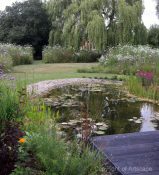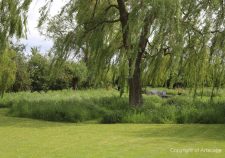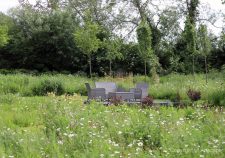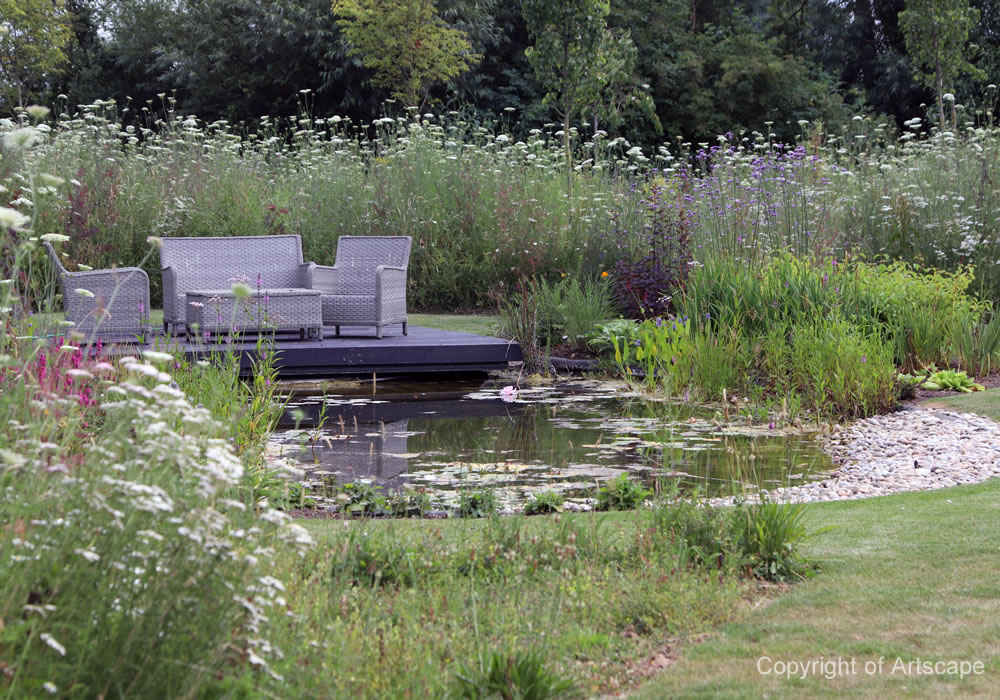 Want to attract butterflies and songbirds to your garden? Then consider creating a natural living wildlife pond. Large or small, it will be good for the environment and beautiful to look at too.
Want to attract butterflies and songbirds to your garden? Then consider creating a natural living wildlife pond. Large or small, it will be good for the environment and beautiful to look at too.
A pond is a wildlife habitat that is increasingly rare to find these days, as many of the UK’s ponds have disappeared or are in a poor state. So, by adding a natural pond to your garden you will make an important difference to the survival of many species, especially insects and amphibians.
What will a new pond attract?
Wildlife will find a new pond surprisingly quickly. Pondlife such as pond skaters and water beetles could appear in a few weeks, while dragonflies, frogs and newts could arrive in the first year. A very large pond would also support waterfowl, such as mallard ducks, moorhens and coots. Birds such as swallows will pick off insects from above the water surface; and a heron might also visit, to feed on amphibians.
How to build a successful living pond
Site, size, shape and planting are the four key aspects of building a new pond that you need to get right.
 Siting a wildlife pond
Siting a wildlife pond
Choose a warm, bright, quiet area with some shade for your pond as this will be best for wildlife and plants. Tadpoles and dragonflies will particularly thrive in these conditions. Don’t site the pond near trees to avoid leaf fall into the water. The pond will need some shade to allow the water to remain cooler and the pond less likely to have algae bloom, however this can be achieved through planting.
Shape and size of a wildlife pond
The larger your pond the more wildlife you can expect to attract. A depth of 20 – 90cm (8in – 3ft) but ideally as deep as possible, up to 1.5 meters, helps to keep the water temperature stable reducing algae build up and better plant growth.
Make sure some edges are shallow and sloping to allow amphibians and small creatures easy access in and out of the pond. Gravel and flat stones will create an attractive ‘beach’ edge. When the water level fluctuates, as it will naturally, this shallow edge will be a nice damp habitat which is vital for many beetles, bugs and flies. Birds, hedgehogs and smaller insects such as honeybees and hornets will also be able to drink without risk of falling in the water.
 Plants for a wildlife pond
Plants for a wildlife pond
It is important to pick the right native plants for your pond. Aim for a variety of different types of plants from submerged and floating, to emergent and marginal. This will create structure and diversity in the pond for wildlife to hide and live in.
Floating plants, such as waterlily, will provide shade to the water below and the leaves will act as platforms for a variety of insects.
Submerged oxygenating plants such as hornwort and curled pondweed will give creatures such as tadpoles plenty of cover from predators.
Emergent plants with erect stems and leaves that poke up out of the water, such as water iris and ruches, will be an ideal spot for damselfly and dragonfly larvae to crawl up.
Marginal plants are those that grow at the shallow edge of the pond, such as water mint and marsh marigold.
Wildlife pond and eco-friendly garden design
At Artscape we are experienced in constructing wildlife ponds which will establish rapidly and blend seamlessly into the surrounding landscape. If you would love newts, frogs and dragonflies and other wildlife to visit your garden in Berkshire or Buckinghamshire, please get in touch with us at Artscape to arrange a wildlife pond consultation.




